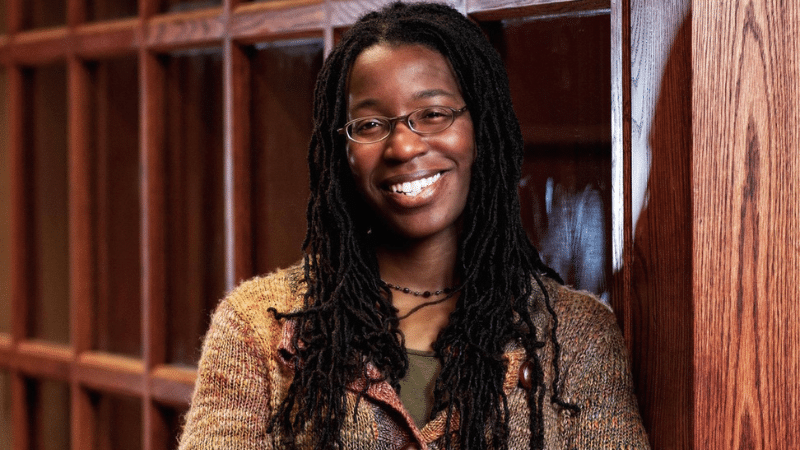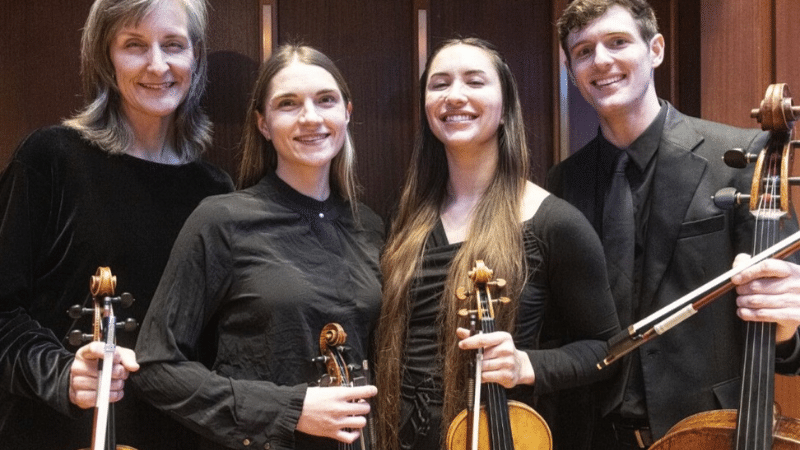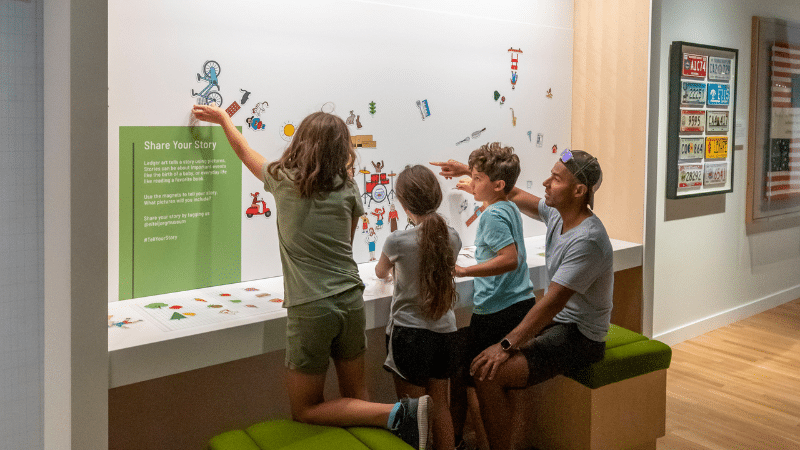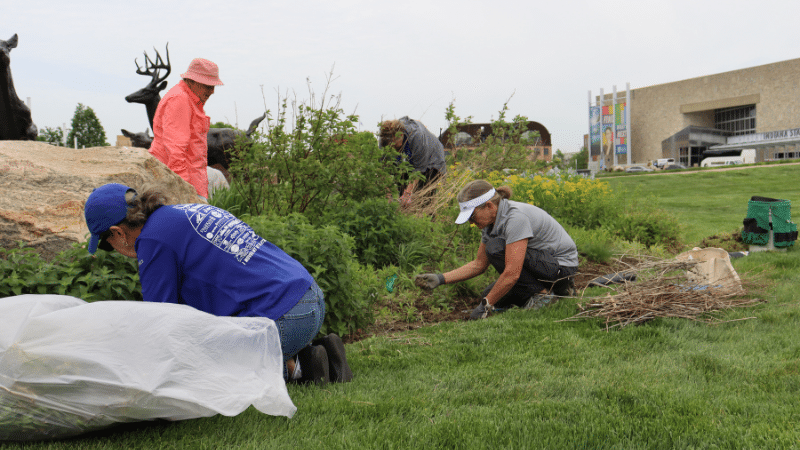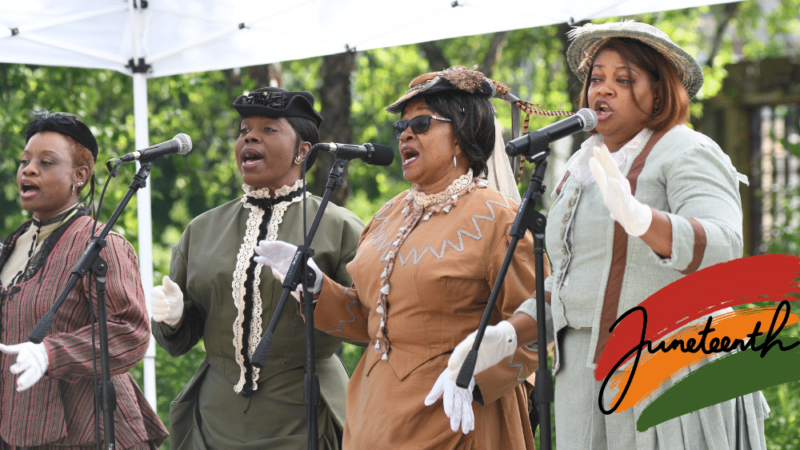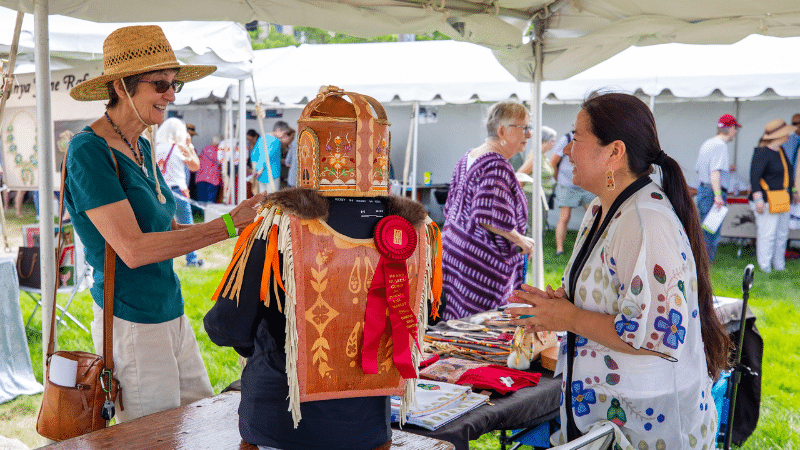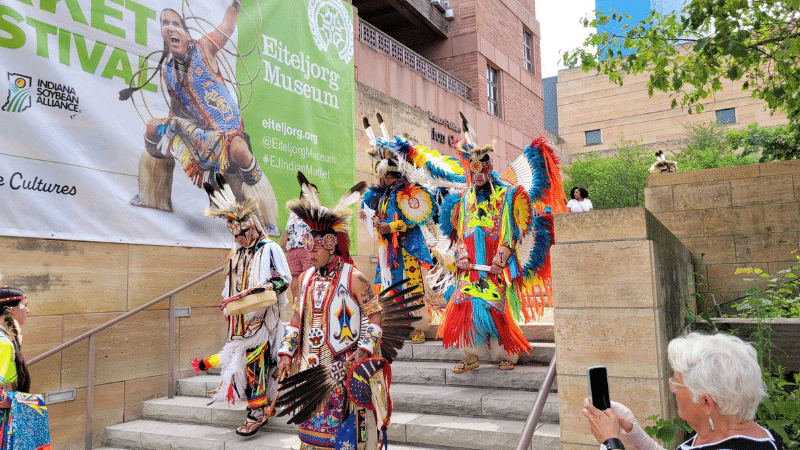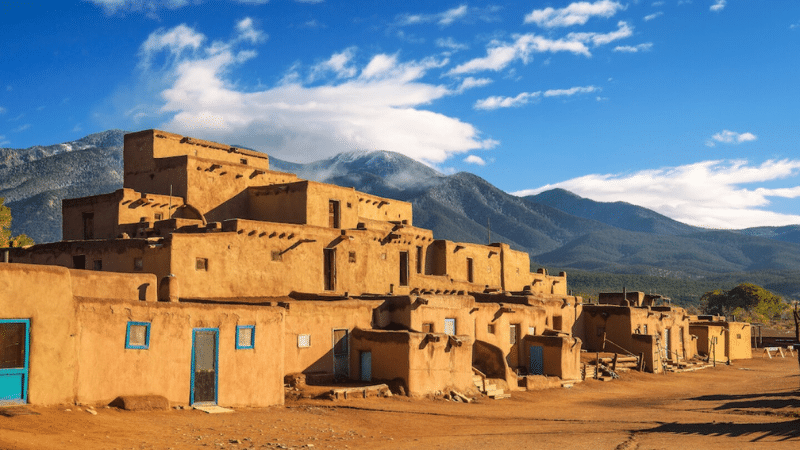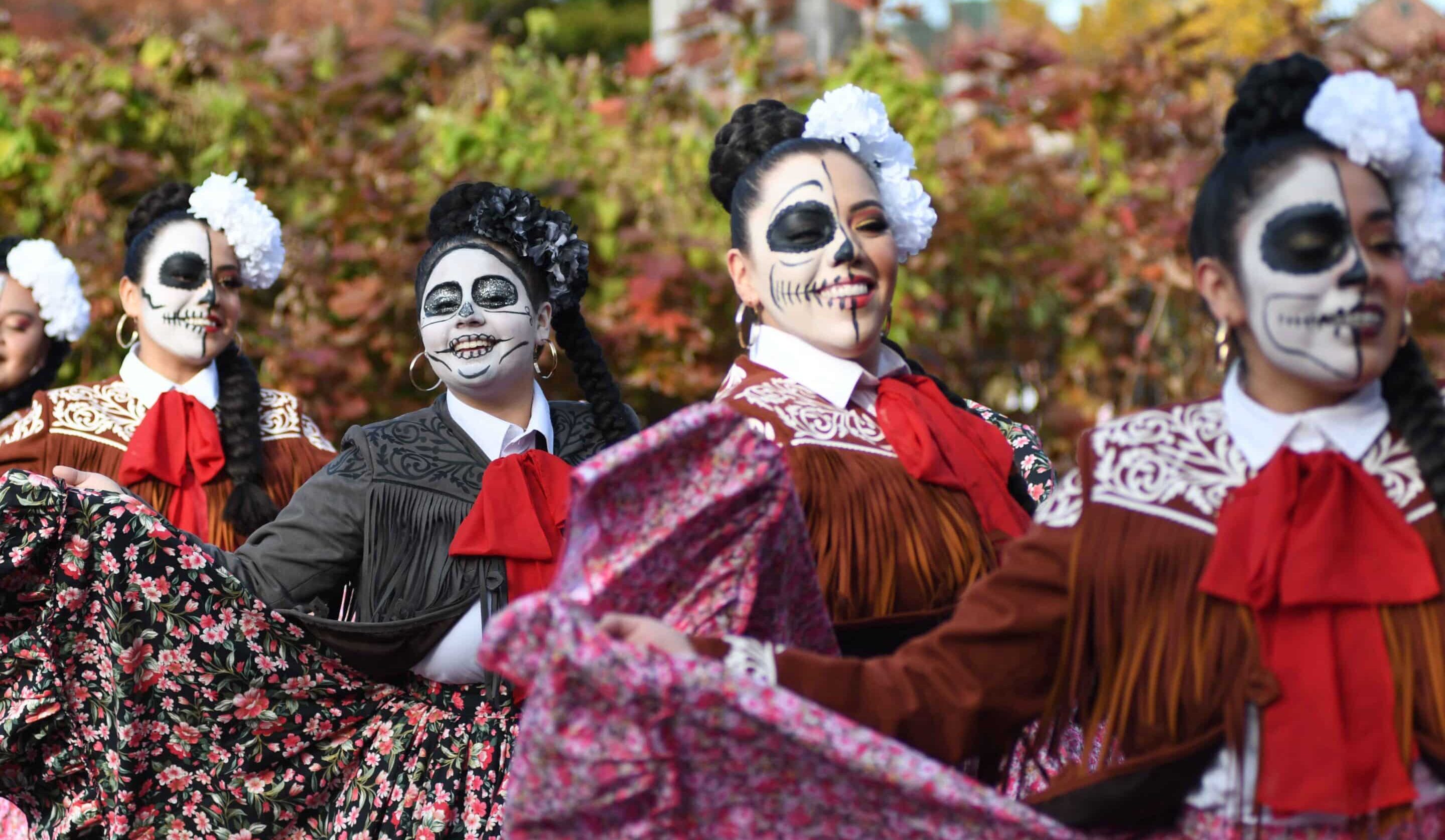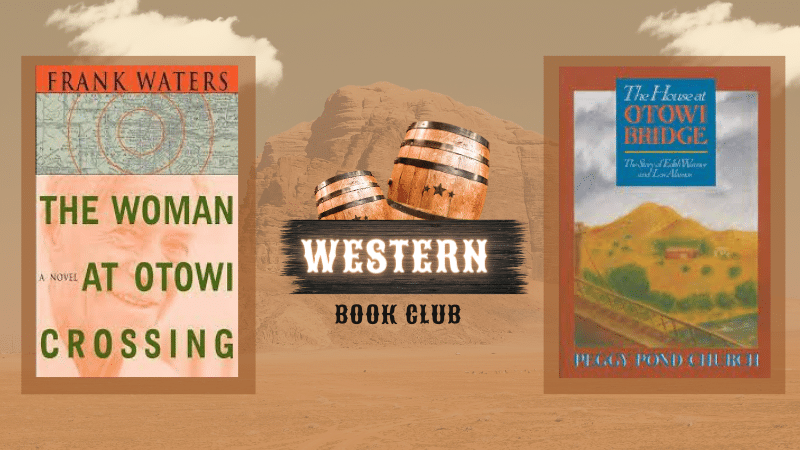2020: The Year of Honoring Women
By Elisa Phelps, Eiteljorg vice president and chief curatorial officer
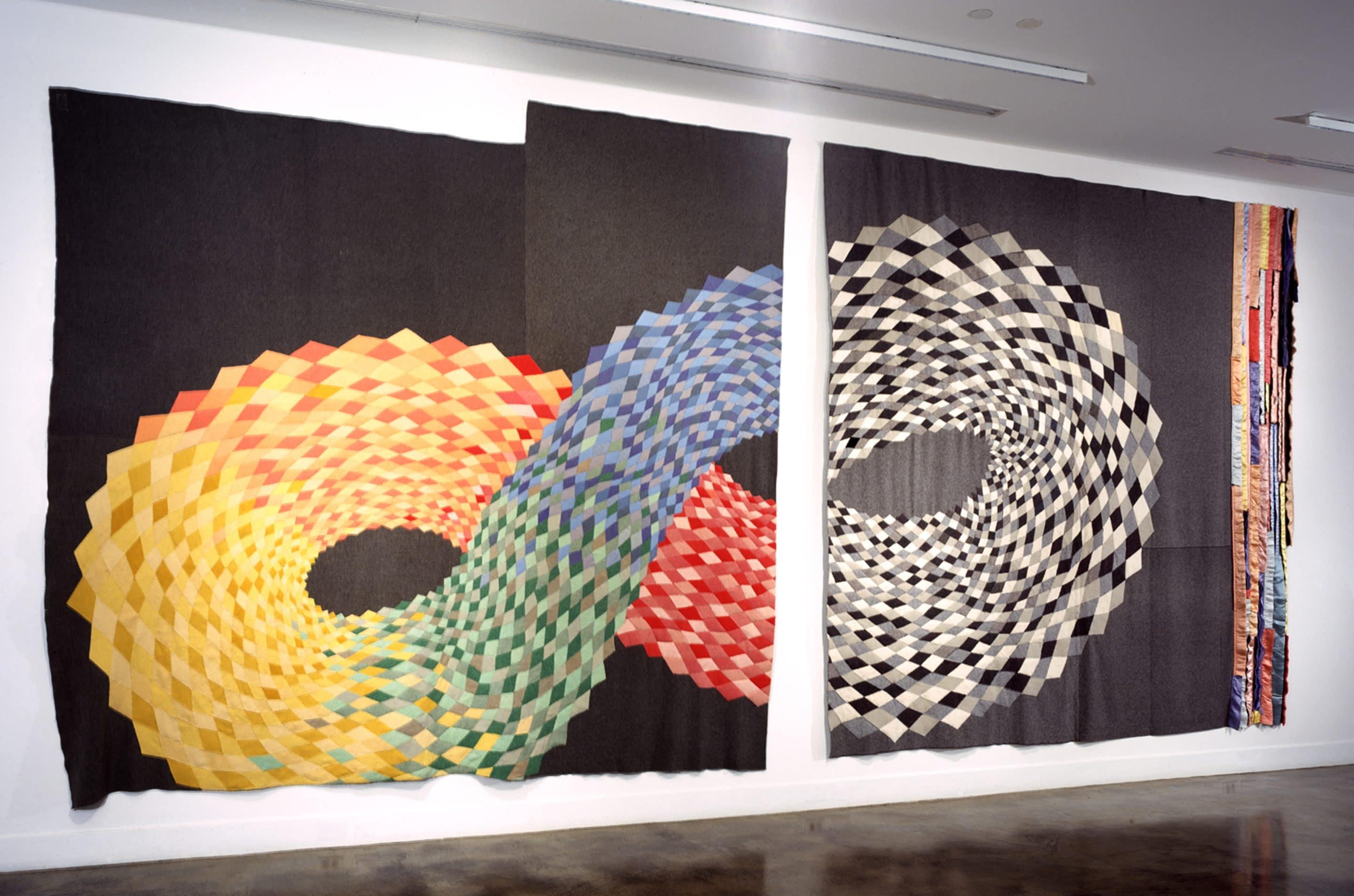 Marie K. Watt (Seneca, born 1967)
Marie K. Watt (Seneca, born 1967)
Braid, 2005, reclaimed wool blankets, satin binding
Museum purchase from the Eiteljorg Contemporary Art Fellowship
As our nation celebrates the 100th anniversary of women’s suffrage, women’s stories and experiences are front and center. Women of the West led the nation into the struggle for women’s suffrage. Decades before the Nineteenth Amendment to the Constitution made it law, the women of Wyoming Territory were the first to secure suffrage when legislation guaranteeing them the unconditional right to vote was passed there in 1869. Colorado was next, approving a statewide referendum on women’s suffrage in 1893. By 1914, most states west of the Mississippi had granted women’s suffrage while the first Eastern state, New York, did not permit women to vote until three years later.
Why women’s suffrage was so successful in the West raises larger questions about women’s diverse roles, and brings forward issues such as why Native American women remained excluded from voting until many years later.
Western women lay claim to many firsts in women’s history. Esther Morris, the first woman in the United States to serve as a judge, hailed from Wyoming. In politics, Colorado was home to the first women elected to serve in state legislatures. Suffrage activist Jeannette Rankin was the first female representative to the United States Congress, elected from Montana in 1916. The West was also home to the first woman governor in the country, Nellie Tayloe Ross, who was sworn in as governor of Wyoming in 1925. The tradition of trailblazing Western women continued with the daughter of an Arizona cattle rancher, Sandra Day O’Connor, being appointed as the first woman on the U.S. Supreme Court. Proud of her Western roots, O’Connor shared her story in a book, Lazy B: Growing Up on a Cattle Ranch in the American Southwest.
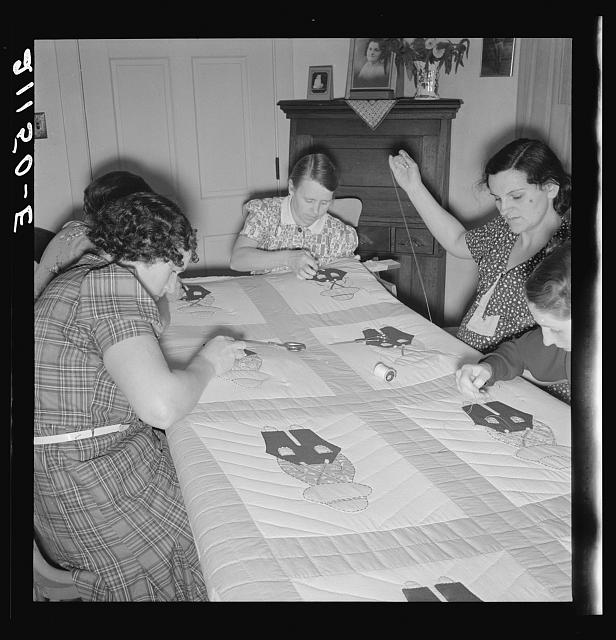 Dorothea Lange (American, 1895-1965)
Dorothea Lange (American, 1895-1965)
Farm women working on quilt. Near West Carlton, Yamhill County, Oregon. General caption number 58-11, 1939
Photograph, image courtesy of Library of Congress, Prints & Photographs Division, FSA/OWI Collection, LC-DIG-fsa-8b34999.
Seeking fuller representation
With its dual mission to inspire an appreciation of both Native American and Western art, history and culture, the Eiteljorg brings multiple perspectives to sharing women’s stories. One aspect of honoring women is acknowledging their underrepresentation in the Western art collection and in the field generally. The Eiteljorg curatorial staff is currently working on an updated collecting plan that identifies collection gaps and goals for future collecting, and builds on recent efforts to represent the diversity of the American West more fully.
Likewise, the contributions of Indigenous women artists, especially customary (traditional) artists of the 19th and early 20th centuries, have too often gone unrecognized. The names of Native American women weavers, basket makers and bead workers who created the beautiful historic pieces were not recorded, and are sadly lost to us. When considered as the work of anonymous creators, customary Native art is often viewed as simply representative of different cultures rather than the products of individual women with families, dreams and great personal pride in their work. While we may never know the names of the makers, we can honor their work as we plan for the reinstallation of the Eiteljorg’s Native American galleries, scheduled to open in 2022-23.
An important year of exhibitions
The national focus on women’s rights in 2020 represents an excellent time for the Eiteljorg Museum to honor women and their diverse experiences in the West and Native America. Special exhibits sharing women’s stories through three different mediums — quilts, contemporary art and photographs — will be featured in 2020 and 2021.
Quilts: Uncovering Women’s Stories tells the stories of women’s experiences in the West such as traveling the Oregon Trail, incarceration in an internment camp during World War II, remembering the loss of a loved one and celebrating family occasions and community pride. Created by women who are activists, artists, family historians, mothers, community leaders, refugees and more, the featured quilts are physical expressions of diverse women’s stories.
Powerful Women: Contemporary Art From the Eiteljorg Collection highlights contemporary women artists, especially Native artists, and the powerful works they have created that speak to issues of personal identity, political agency, memory and violence against women.
Hard Twist: Western Ranch Women focuses on the life of ranching women as seen through the lens of noted photographer (and Montana rancher) Barbara Van Cleve. Van Cleve’s images evoke the challenge and commitment of ranch life and make clear the important role of women in shaping the story of the American West.
We invite you to join us in honoring these and other women and their remarkable stories.
A LOOK AT THE YEAR OF HONORING WOMEN:

Faye Lone (Seneca)
Grand Entry, 2008
Cotton fabric, cotton batting, thread
104 × 91 inches
2008 Indian Market & Festival Purchase Award
QUILTS: UNCOVERING WOMEN’S STORIES
MARCH 7, 2020–JAN. 3, 2021
Quilts embody personal stories and symbolize community relationships. They document people, places and events, and serve as visual records — ones created largely by women — that help us study and understand Western art, history and cultures. Using quilts borrowed from private and museum collections, this exhibition explores the diverse experiences of women in the American West and Native America, through themes of family and community, ethnic and regional identity and political power and agency. Visitors will encounter beautiful and compelling quilts, historic and contemporary, that encompass a variety of styles and convey the life experiences of the women who created them and the times in which they lived.
Programming during the exhibition includes guest speakers, gallery tours and collaborations with community groups, including the Quilters Guild of Indianapolis, INfiber and Crimson Tate.
 Luzene Hill (Eastern Band of Cherokee, born 1946)
Luzene Hill (Eastern Band of Cherokee, born 1946)
Retracing the Trace, 2011-2015, satin cord, ink, pastel
Museum purchase from the Eiteljorg Contemporary Art Fellowship
POWERFUL WOMEN: CONTEMPORARY ART FROM THE EITELJORG COLLECTION
FIRST ROTATION: SEPT. 19, 2020–MARCH 21, 2021
SECOND ROTATION: APRIL 17, 2021-JAN. 18, 2022
A new yearlong exhibition at the Eiteljorg explores the work of visionary female artists who shaped and changed the ways people think about contemporary art. The Eiteljorg is home to one of the world’s best collections of contemporary Native art, and the first phase of the Powerful Women exhibition highlights exceptional works from that collection. Captivating artworks include sculpture by Anita Fields (Osage), mixed media installations by Bonnie Devine (Ojibwa), work on paper by Kay WalkingStick (Cherokee Nation), textile art by Marie K. Watt (Seneca), stills from video by Skawennati (Mohawk) and important works by other women artists. An installation by Luzene Hill (Eastern Band of Cherokee), Retracing the Trace, reflects on issues of rape and sexual violence against women.
In spring 2021, a second rotation of the Powerful Women exhibition will incorporate other works by Latina, Asian, Native American and African-American contemporary artists.
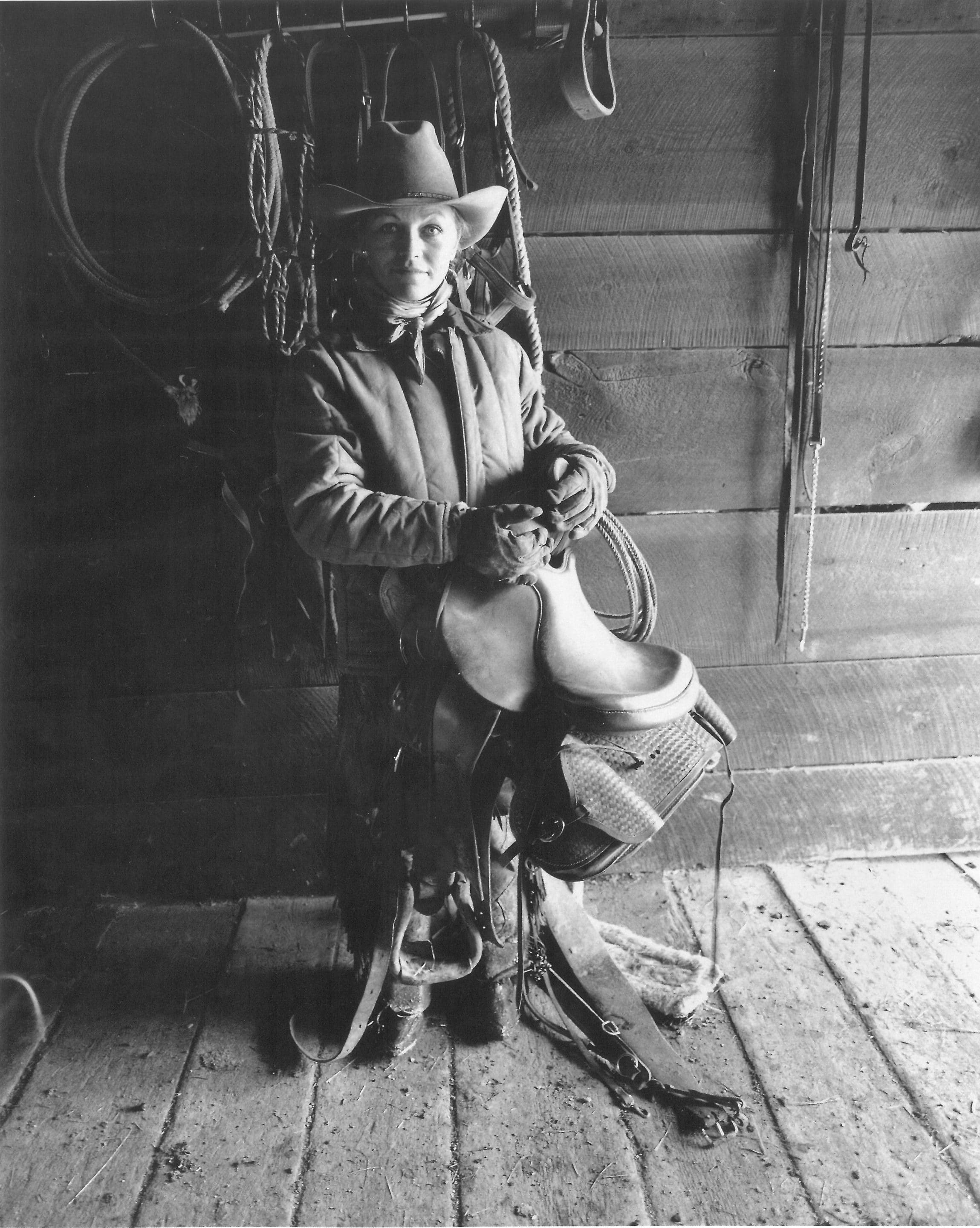 Barbara Van Cleve
Barbara Van Cleve
Melody Harding, Bar Cross Ranch, WY, 1995
Photograph, 51.5 x 41.5 inches
Image courtesy of the National Cowgirl Museum and Hall of Fame
HARD TWIST: WESTERN RANCH WOMEN — PHOTOGRAPHS BY BARBARA VAN CLEVE
JAN 30, 2021–APRIL 25, 2021
This traveling exhibition of documentary-style photographs explores women’s diverse experiences in the West. Focusing on the lives of women ranchers from the northern Rockies to the Mexican border, Hard Twist features more than 60 photographs by Barbara Van Cleve and related objects that evoke the women’s physical prowess, commitment to family, hard work, emotional maturity and a sense of humor. Hard Twist has been described as a celebration of women of the range, their ranches and the breathtaking Western landscapes in which they live.
Looking ahead to Summer and Fall 2020 and 2021:
For additional event details, please visit www.eiteljorg.org and click on “Events.” Programming events related to the year of Honoring Women will take place in 2020 and 2021, including guest speakers, music performances, film screenings and artists in residence.
INDIANA WOMEN’S SUFFRAGE CENTENNIAL
AUG. 29, 2020
In conjunction with the Indiana State Museum, Indiana Historical Society and others, special programming at the Eiteljorg will mark the 100th anniversary of women attaining the right to vote in Indiana. Eiteljorg events will focus on the underrepresented voices of the suffrage movement: Native American women, African-American women and other women of color.

Poet Laureate of the United States Joy Harjo Image by Shawn Miller
JOY HARJO – UNITED STATES POET LAUREATE
MARCH 5, 2022, 1 P.M.
The first Native American to hold the prestigious position of U.S. poet laureate, Joy Harjo (Mvskoke/Creek Nation) is an internationally known award-winning poet, author, public speaker, saxophonist and recording artist. She is scheduled conduct a poetry reading and book signing at the Eiteljorg on March 5, 2022; check www.eiteljorg.org. for details.
The Year of Honoring Women is sponsored by:
Margot L. Eccles Arts & Culture Fund (A CICF Fund)
Capital Group
Chase Private Client
Ice Miller LLP
Citizens Energy Group
Indiana Arts Commission
Art Council of Indianapolis
Quilts: Uncovering Women’s Stories is also sponsored by:
Don Hinds Ford
Quilt Quarters
With additional support from:
Quilts Plus
Crimson Tate
This article originally appeared in the February 2020 issue of Storyteller magazine.


